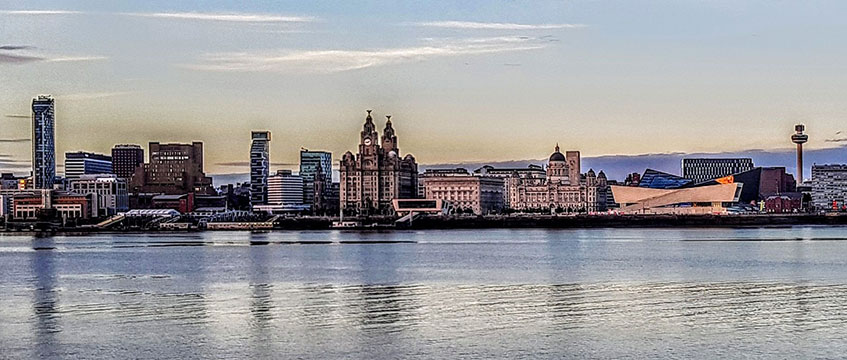Liverpool City Council has appointed urban design and landscape architecture firm West 8 and BDP to create a plan for the city’s iconic waterfront over the next 25 years.
West 8, which is headquartered in the port city of Rotterdam, has been involved in major waterfront regeneration projects in New York, Toronto, Shanghai, Hong Kong, Hamburg and Rotterdam.
International architecture and engineering practice BDP has a significant track record in Liverpool, designing and delivering the Liverpool One masterplan, the redevelopment of Aintree Racecourse, the new Alder Hey Hospital and Everton Football Club’s new stadium.
The place-making experts have been asked to collaborate to produce a plan that knits together future regeneration projects and ensures that development is more inclusive. They will be supported by consultants at WSP (on connectivity and movement) and Ekosgen (on social impact).
The final waterfront plan will be taken forward for adoption as a supplementary planning document.
Liverpool’s waterfront has been transformed over the past 20 years, and more major regeneration projects are due to come to fruition, including a significant housing scheme at Festival Gardens and Everton’s new stadium at Bramley-Moore Dock.
The council’s development team, led by Nuala Gallagher, is also close to finalising the design and delivery strategy for the further development of Kings Dock. Meanwhile, National Museums Liverpool and Tate Liverpool are currently leading on regeneration projects at their Royal Albert Dock buildings, including the historic Canning Dock, and major redevelopment will be coming forward as part of the Liverpool Waters scheme.
West 8 and BDP will carry out engagement work with the city’s residents, businesses, key stakeholders such as Liverpool BID Company, Grosvenor and Tate Liverpool, and major landowners such as Peel L&P, National Museums Liverpool, the Canal & River Trust, General Projects and Liverpool Yacht Club.
The council said: “While Liverpool’s waterfront is a thriving destination, there are challenges around inequality and deprivation in adjoining neighbourhoods, and there are disparities between the demographics of the wards along and adjoining the waterfront.
“The council intends that this plan will form part of an approach to ensure that developments coming forward are more inclusive, and the strategy will identify key challenges and opportunities for change to maximise benefit for communities along and adjacent to the waterfront.
“In addition, there are key challenges and opportunities around maximising investment opportunities and economic activity in the docks, connectivity and linkages – north/south and west/east – public realm and quality of place, and conservation and enhancement of the natural and historic environment, as well as climate change and the city’s ambition to deliver net zero by 2030.”
Liverpool’s draft waterfront plan will have seven defining aims:
- Maximise the waterfront’s contribution to the city’s and city region’s economy.
- Maximise the benefits of investment along the waterfront and ensure that any revitalisation will benefit hinterland communities.
- Enhance connectivity along the waterfront and inland, promoting active travel and improving links between key areas of activity along the waterfront and adjacent communities.
- Ensure the conservation and enhancement of the significance of the city’s heritage assets and support the interpretation of Liverpool’s distinct historic maritime environment.
- Inspire excellence in quality of place and urban design, reconnect people with the water and reinforce the waterfront as a great location for business, homes, play, culture and tourism.
- Identify key infrastructure needed to support the regeneration of the waterfront.
- Consider environmental improvements and green infrastructure to improve the public realm and deliver sustainable, creative and innovative solutions to address the impact of climate change.
Photo © Liverpool City Council
Send feedback to Julia Cahill
Follow Estates Gazette











